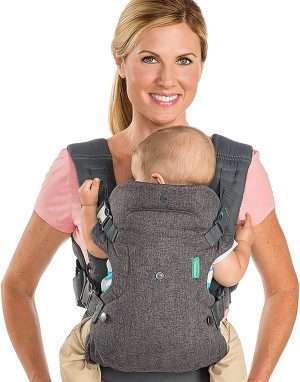Babies
The beginning of your beautiful adventure of childcare has now begun and requires an immense amount of patience, knowledge, love and care. Within this guide we have included a multitude of techniques, tips and tricks to help you care for your precious bundle of joy and create a safe and loving environment for them to grow and start discovering the world in.

Feeding and Nutrition
Positioning for Comfort
There is no right or wrong way to hold your baby whilst breastfeeding. Finding something that feels natural and comfortable to you and your child whilst also maximizing milk transfer is the main objective. You can experiment with various positions such as the laid-back or reclined position, cradle hold, koala hold or football hold. And if none of these take your fancy, there are multiple more to choose from. Ensure that your baby is secure and has a comfortable latch during feeding which will make both of you feel better during this time.
Techniques for Bottle Feeding
When beginning to bottle feed some helpful tips include picking a time when the baby is not too hungry or full. Position the bottle at a slight angle rather than straight up so that the milk only comes when the child sucks. This technique also prevents air from entering the container and diminishes any hazards or inconveniences for the baby. Trying out various container and areola sizes to find one that your child enjoys could also help for a smooth feeding session.
Importance of Burping
After your baby is satisfied with their milk intake, make sure to gently pat their back to help let any air out that they may have swallowed. Burping your baby reduces the chances of your child spitting up, having Colic and being uncomfortable due to feeling gassy. Try finding a good burping position such as sitting upright or over the shoulder as this could also help your baby and make them feel even more comfortable.
Introduction of Solid Foods

Slow and Steady
The introduction of solid foods can feel like a tedious process however, presenting new foods steadily and continuously will permit your child’s stomach to adjust and start processing more foods whilst also limiting the gamble of a sensitive response. Start by introducing singular food purees such as crushed bananas or peas then wait a few days to see how your baby reacts to the introduction. The reactions can include vomiting, rash or diarrhea. If however, there is no reaction, you can continue experimenting and slowly add in more than one ingredient.
Progressive Textures
After some time of purees, you can begin to introduce soft fruits, vegetables and finger foods, finely chopped and in small amounts. This will encourage chewing and start to develop your baby’s motor skills. Be patient and attentive to your infant’s cues as each baby is different and will develop at their own pace.
Patience is Key
Either skepticism or excitement can accompany the introduction of new flavors. Be aware that your baby’s preferences are perfectly normal and that adjusting to new foods may take several tries. Be patient, provide a variety of healthy choices, and let your baby discover and learn about their preferences over time.
Sleeping Habits
Establishing a Bedtime Routine
Consistency for Security
Routines are critical to create a sense of safety for your baby. Planning out your evening by slowly introducing consistent winding down exercises like a warm bath, cuddle time with a lullaby, bedtime story or simply starting to turn down lights, can help your baby develop an understanding of rest. Consistency is key, as it let’s your child start to perceive prompts that sleep time is close and thus create a smooth process for you both, paving the path to relaxation.
Optimal Sleep Environment
To ensure that your baby feels comfortable and sleeps well, try to create a cozy and easily manageable environment. Pay close attention to temperature and lighting. Ensure that anything you may need during the night is within reach and easily accessible. Investing in quality resources for your baby’s room may be ideal to help you as it gives you peace of mind and ensures an easier night.
Responsive Settling
Around 2 months of age, your baby will begin being more consistent with their inner clock, making it easier for you to amend and adjust your routines. However, it’s important to listen to your child’s needs especially at the start. When they wake up during the night, make sure to respond as quickly as possible, giving them consolation and knowledge that you are there. As they slowly begin to create self-relieving abilities, progressively support more free rest tendencies while still being responsive and sustainable.
Naptime Tips
Recognition of Tiredness Cues
To avoid overstimulation and encourage healthy naptime and sleep routines, pay close attention to your baby’s cues. Crying, rubbing one’s eyes, getting fussy, yawning, are all signs that your baby needs some rest. By answering these signals immediately, you can ensure that your child rests calmly and isn’t overstimulated or overtired. This in turn will diminish the chances of irregular wake up times and your child being upset during the day.
Flexible Nap Schedule
Although as previously stated building routines is important for your baby’s development, you also have to make sure to be adaptable to their timetable and cues. All children are different and have different developmental patterns. Some may thrive on consistent yet short surges of rest and others may prefer more elongated and united times. Notice how your child reacts and what they want and customize your schedule accordingly to make it agreeable for you both.
Adherence to Safe Sleep Practices
Make safe sleeping habits a priority at both nap time and bedtime. Continuously put your child on their back to rest, utilize a solid sleeping pad with a fitted sheet, and try not to free bed or delicate toys in the den. By observing these rules, you establish a protected rest climate that diminishes the gamble of Unexpected Newborn Child Demise Condition (SIDS) and advances a more secure rest insight for your child.
Hygiene and Diapering
Diaper Changing Basics
Preparedness
Make sure that you are ready with any vital stock you may need during diaper changes. Wipes, pieces of clothing with distinctions, diapers, creams and perhaps organizational dividers for your drawers will help you immensely. Make sure that all of the before mentioned items are within arms reach and comfortable for you. This will ensure an easier process for your child to get used to and accept.
Gentle Cleaning Practices
Making sure that your baby is fully clean during diaper changes is highly important. Consider using a damp cloth as well as hypoallergenic and aroma free wipes. Use good wiping practices, getting into all kinks and wrinkles. This will help with both your baby’s comfort and hygiene.
Diaper Rash Prevention
While diaper rash is a common concern, effective preventative measures can help safeguard your child’s skin. Apply a diaper cream after each change to protect against moisture and irritants. Choose a cream that contains zinc oxide or petroleum jelly for increased efficacy. Reliably check for signs of redness or aggravation and address them immediately to thwart trouble.
Bathing Tips
Optimal Water Temperature
For a safe and enjoyable bath, it’s important to have a comfortable water temperature. Test the water with your elbow to make sure it is neither too hot nor too cold before putting your baby in the tub. Go for the gold, ordinarily around 98.6°F (37°C), to give a calming and pleasant washing experience for your little one.
Gentle Product Selection
Using hypoallergenic and gentle cleansers is very good practice when considering your baby’s hygiene. Look for products that are specifically designed for newborns and are devoid of any aromas or cruel synthetic chemicals. If a product comes into contact with your baby’s eye, try using a formula that does not produce tears to lessen discomfort. In the case that any of the products do cause a reaction from your child, change them immediately and look for better alternatives.
Vigilance for Safety
When it comes to bath time, never leave your baby unattended, in any event. Make sure any products you may need are within comfortable reach and that your baby is always held and secure.
Safety and Comfort
Baby-Proofing Your Home
Crawl-Level Exploration
When beginning to “baby proof” your living space as they start to explore, get down to their eye level to survey any possible risks. These could include sharp corners, power plugs, low level fragile decorations. Identifying these hazards early on and taking appropriate measures will not only provide your baby with a safe environment to play and explore in but also give you some peace of mind.
Secure Furniture
As your baby will start using various furniture for support to pull themselves up or help them move around, tipping and falling may become a hazard. To prevent this, ensure that furniture is fixed to floors or walls in accordance with manufacturer instructions. Utilize anchors or sections to decrease the chances of a safety gamble.
Outlet Covers and Safety Gates
Electrical outlets are some of the most obvious and common when it comes to possible dangers for your child. Utilizing power socket covers around your home is a good way to avoid the hazard of electrical wounds for your baby. Additionally, invest in gates and strategically place them around your home to help guide your baby against going into areas that they should avoid. These could include staircases or rooms with potential dangers.
Choosing Safe Products
Non-Toxic Toys
Prioritize non-toxic and BPA-free toys when shopping for your baby’s playthings. Guarantee that toys are age-proper and liberated from little parts that could represent a stifling risk. To ensure a safe play environment, regularly inspect toys for wear and tear and replace any damaged items as required.
Baby-Friendly Laundry Detergents
Because your baby’s skin is so delicate, it’s important to use the right laundry detergents. Pick a gentle and hypoallergenic cleanser explicitly figured out for newborn children. Stay away from cleansing agents and unforgiving synthetics that might disturb your child’s skin. Washing child garments independently from the remainder of the clothing limits openness to possible allergens.
Mindful Monitoring
As your child develops their interests will also change. Keep an eye on what engages their attention and make changes to their toys and surroundings accordingly. Every child is different and will have different times for their developmental milestones. Keep engaging their curiosity and exploration and ensure that their toys are safe and age appropriate.
Emotional Well-being
Bonding and Communication
Skin-to-Skin Contact
This bonding technique provides comfort, safety and security for your little one. Consistently encouraging it during nap time, cuddling, whilst you’re taking care of your child or doing daily activities, is a great way to increase your closeness and connection. On top of that your baby’s overall emotional well-being benefits profoundly through this experience.
Frequent Communication
You should always encourage discussions with your little one, even though they are too young to even consider answering back. As they hear your voice, mannerisms, rhythm of speaking and lexicon, their language will slowly begin to advance as well. Although it may seem silly at first, talking during mundane activities such as cooking or cleaning, singing lullabies and responding to your baby’s reactions are a great way to start. Think of them as your newfound, very interested best friend. Promoting communication constantly will also benefit you and your child in the future as it sets a openness characteristic for your relationship.
Prompt Response to Cues
Cries, facial expressions, and body language are all ways that infants communicate. Respond promptly to your baby’s needs and be attentive to their cues. Whether it’s yearning, distress, or the requirement for a diaper change, a responsive methodology fabricates trust and consoles your child that their necessities will be met, adding to a solid profound establishment.
Related Products :
what to buy for pregnant wife
list of things to buy when pregnant
when to buy a pregnancy pillow
what to buy in first trimester
new mom pregnancy gifts
what to buy for a pregnant woman
when to get a pregnancy pillow
what to buy for pregnant friend
Pregnancy Products
things to buy during pregnancy
what to buy a pregnant woman
what to buy when pregnant
things to buy for a pregnant woman
what to buy pregnant woman
things expectant mother should buy
pregnancy things to buy
pregnancy items to buy
what to buy first trimester
things to buy for pregnant wife
what to buy for pregnant lady
what to buy for a pregnant friend
what to buy first when pregnant
First things to buy when pregnant
what to buy for an expecting mother
when to buy a crib during pregnancy
what to buy someone who is pregnant
things to buy in first trimester
things to buy your pregnant wife
pregnant what to buy
things to buy pregnant woman
things to start buying when pregnant
pregnancy list of things to buy
gifts to buy pregnant wife
what to buy pregnant friend
things to buy when pregnant
pregnancy stuff to buy
what to buy when you find out you re pregnant
what to buy my pregnant wife
things to buy for pregnant ladies
Tips for Pregnant Women
Pregnancy Products
Your Pregnancy
First Pregnancy Advice
Pregnancy Tips for First-Time Moms
Pregnancy Care Tips
First-Time Pregnancy Tips
Early Pregnancy Care Tips
Early Pregnancy Tips
Pregnancy Help
Pregnancy Tips
Pregnancy Guide
Pregnancy Advice
Maternity Tips
Pregnancy Health Advice
Pregnancy Healthcare
Prenatal Help
Healthy Pregnancy Tips
Care Pregnancy
Pregnancy Tips and Advice
Pregnancy Guidance
Pregnancy Health Tips
Prenatal Advice
Pregnancy Take Care
Good Pregnancy
Prenatal Tips
Pregnancy Take Care Tips
Pregnancy Health Care Tips
healthy pregnancy tips
pregnancy advice
pregnancy health tips
early pregnancy advice
your pregnancy
first pregnancy advice
pregnancy tips for first time moms
first time pregnancy tips
early pregnancy care tips
early pregnancy tips
















